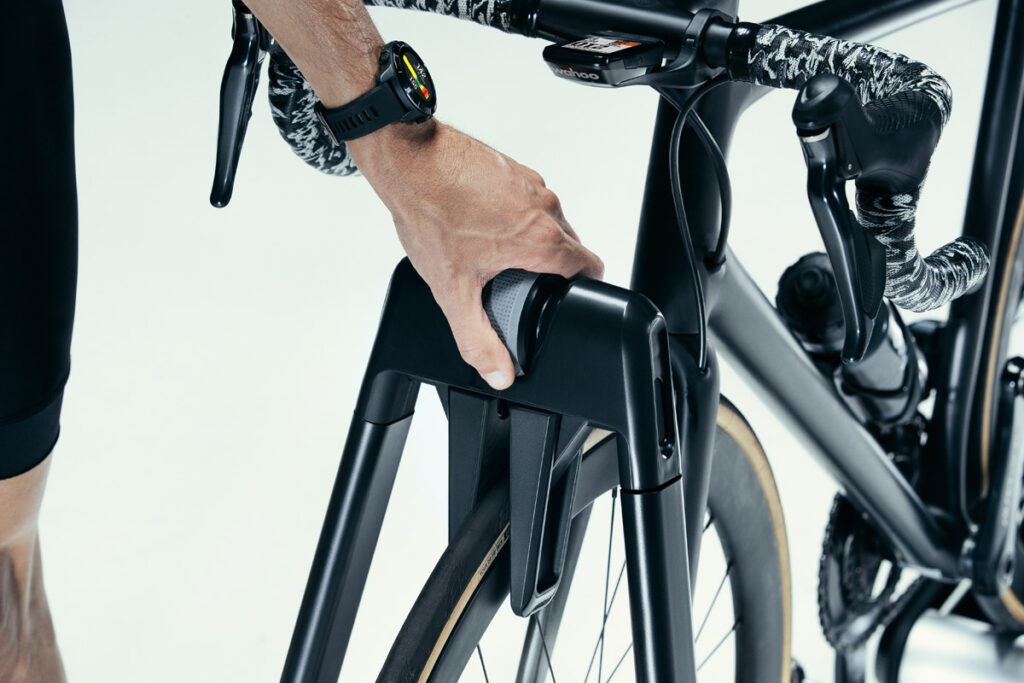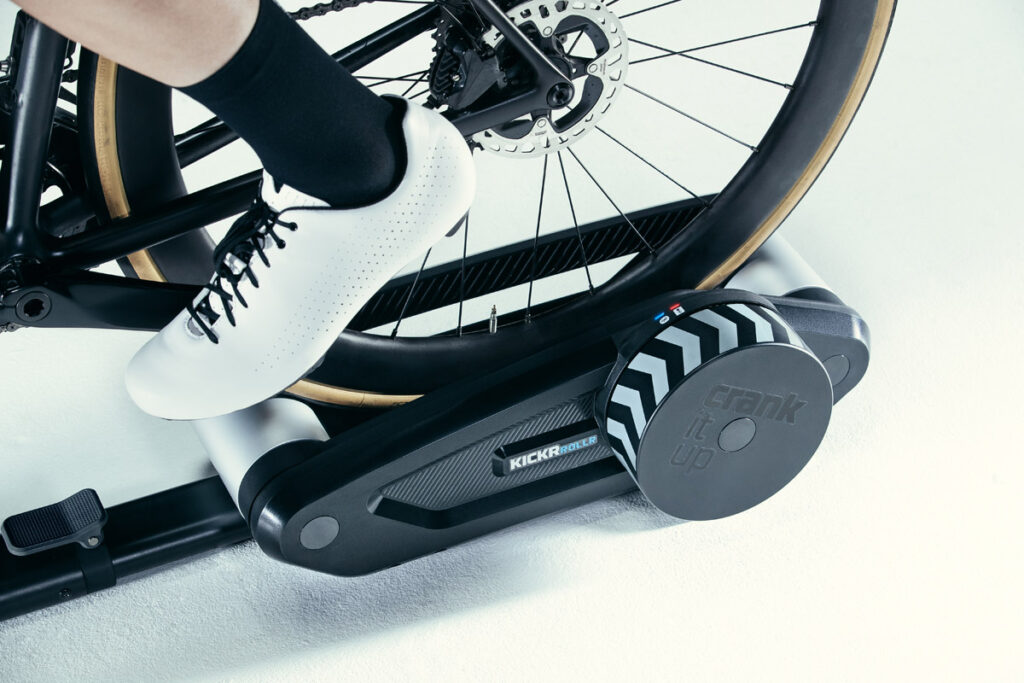Today, Wahoo announced a firmware update to their KICKR ROLLR which brings native power sensing to the device. Let’s take a look at this unique “smart trainer”, how to update its firmware, and more details behind what Wahoo released today.
About the ROLLR


The ROLLR, for those unfamiliar, is a unique sort of “smart roller” because your rear wheel rolls freely on the rear rollers, while your front wheel is loosely clamped in so you don’t need to worry about keeping the bike upright. This setup allows your bike to move more freely than a standard direct drive trainer setup, and also makes it easy to get your bike on and off the trainer.
It sold for $799 when first released, but has been priced at $699 for some time now. Shop on Wahoo >
From when the ROLLR was originally released in early 2022 until today, the unit hasn’t sensed or transmitted power. It does adjust resistance to simulate in-game gradients, but riders were expected to either pair an external power meter or connect the ROLLR in “speed only mode”.
Wahoo says they found many customers were using speed only mode, which delivers a less-than-ideal experience in games like Zwift. So they worked on a way to estimate power from your back wheel, and that’s the update we’re seeing today.
Updating Your ROLLR Firmware
Installing the update is easy: just connect to the KICKR ROLLR via your phone’s Wahoo app and follow the firmware update instructions. The whole update takes 1-2 minutes.
Power Accuracy Deep Dive
The big question everyone’s asking is: how accurate is the ROLLR’s new onboard power sensing?
Wahoo is very upfront in setting expectations. The ROLLR firmware page says:
Power readings are consistent when using the same equipment, but they aren’t designed for racing or comparing across devices. For riders who need precise, race-ready data, KICKR ROLLR supports Power Meter Connect to use your bike’s power meter instead.
In fact, Wahoo isn’t even stating an accuracy percentage like you see on most smart trainers. And that’s fair enough, as it’s basically impossible to get accurate power from a roller setup. Changes in tire size, tire temperature, tire pressure, tire speed, rider weight, rider position, and more will all affect any power estimations.
Shane Miller ran the updated ROLLR through a bevy of tests, and dropped a great video (we expect nothing less!) today, sharing details on power accuracy for the updated KICKR ROLLR:
The good news according to Shane is: the unit is acceptably accurate, at least if you’re on a road bike, riding in that “sweet spot” range where most riders will spend their time. This makes complete sense, because Wahoo had to build a set of assumptions into their power sensing algorithm. So they’re assuming riders are on road bikes, within a particular weight range, riding within a particular power window.
If you get outside of that range – riding in your granny gear, for instance, or sprinting at 800W – power accuracy will drop. But even then, as Shane says, the experience is still a good one. Using the ROLLR’s new onboard power sensing delivers a better workout and overall ride experience than the “speed only mode” riders without power meters were using, and that was Wahoo’s big reason for releasing this update.
However, if we head over to DC Rainmaker’s post about the updated KICKR ROLLR, we find his experience is quite different. He found the roller was consistently underreporting and overall less accurate than Shane’s results might indicate. To be fair, Wahoo has said they erred on the side of underreporting power, which is a good move in my opinion. Ray quoted one of Wahoo’s product managers as saying:
“This is not an attempt to replace a power meter, but to get new users without power moving in virtual training and riding platforms. If and when a user does upgrade to power we are hoping they see a power boost vs a decline. Often when using virtual power and upgrading to a power meter users see a decline in power, which can be disappointing.”
So is the new KICKR ROLLR’s onboard power sending good enough?
I’d say yes. While it won’t be +/-1-2% accurate like a good direct drive trainer, it will provide consistent results for riders who ride in a consistent fashion. And the overall Zwift experience with onboard power vs the speed-only mode should be vastly improved.
One final note: while I considered doing some power comparison tests myself using the KICKR ROLLR I have sitting in the garage, my concern is that doing so will just add more messy data to an already messy picture! The ROLLR computes power based on a pile of assumptions, and every bike setup, rider, and individual ride will vary in how closely it matches those assumptions. In the end, I don’t think additional data from my testing will prove useful.
Questions or Comments?
Do you have a KICKR ROLLR, and have you tried its new onboard power sensing? Share below!
